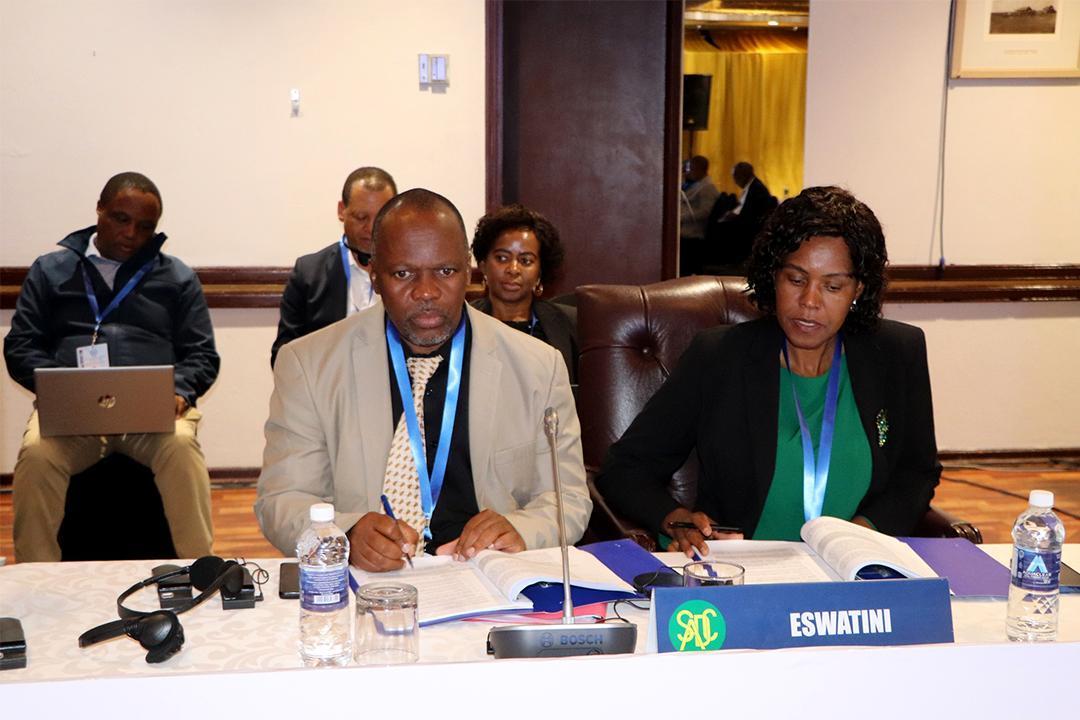Africa-Press – Eswatini. The Southern African Development Community (SADC) is facing a significant electricity shortfall, requiring an additional 795 megawatts (MW) to ensure efficient supply across the region.
This urgent need was highlighted during the 43rd Joint Meeting for Ministers Responsible for Energy and Water, taking place in Harare, Zimbabwe, from June 30 to July 4, 2025.
The Ministry of Natural Resources and Energy has indicated that this electricity deficit underscores the necessity for increased investment and collaboration within the energy sector. Officials from the ministry are actively participating in the discussions at the meeting.
Energy Sector Discussions
The energy sector discussions covered a wide range of topics, including policy frameworks, implementation strategies, and infrastructure projects outlined in the SADC Infrastructure Development Masterplan. Delegates reported on the current energy supply and demand dynamics, as well as the status of various pipeline projects.
Eswatini Energy Plans
Eswatini has ambitious plans to contribute to the regional energy supply, with projects totaling 222.6MW from several initiatives, including:
Lower Maguduza project (13.6MW)
Maguga expansion (10MW)
Lower Maguga project (23MW)
Solar procurement by the Energy Regulator (75MW)
Biomass from sugar companies (90MW)
Biomass by Independent Power Producers (20MW)
Eswatini needs around 233MW of power supply and it produces around 76MW. Most electricity is sourced from neighbouring countries like Mozambique and South Africa. However, the country now has 86% electricity coverage and plans to achieve complete coverage (100%) by 2030.
Member State Support Programmes
Member state support programs were also a focal point of the meeting, particularly the development of efficient lighting standards, which Eswatini has successfully adopted. Additionally, capacity-building initiatives were discussed, including a planned training program in solar thermal energy by the SADC Centre for Renewable Energy and Energy Efficiency, set for August 2025. Regulatory matters were also addressed, with the SADC Regional Energy Regulatory Authority (RERA) enhancing efforts to strengthen regulatory frameworks across the region.
It was emphasized that member states must sign and ratify all regional energy instruments, such as the SADC Revised Energy Protocol, to provide effective guidance on energy matters. The ratification of the SADC Centre for Renewable Energy and Energy Efficiency (SACREEE) is also crucial for the subsidiary to assume its legal status. According to the Ministry, His Majesty King Mswati III has signed the SADC Revised Energy Protocol, and Eswatini’s Ministry of Foreign Affairs is working on ratifying the SACREEE Intergovernmental Memorandum of Understanding.
SADC Electricity Supply
According to the SADC website, currently, approximately 50% of the SADC population has access to electricity, which aligns with the weighted average for Sub-Saharan Africa. However, the region faces a significant electricity shortage, particularly in rural areas, where only 32% have access. With a population of about 366 million, this means around 183 million people in the SADC region have electricity access.
The SADC has been experiencing electricity shortages since 2007, and despite efforts to increase capacity, many projects have faced delays due to funding issues and other challenges.
Southern African Power Pool
The Southern African Power Pool (SAPP), established in 1995, aims to coordinate the reliable and economical supply of electricity and facilitate electricity trading among member utilities. In 2019, the Southern African Development Community (SADC) added 3 595 megawatts (MW) of electricity generation capacity. This brings the total installed capacity to 72 156 MW within the Southern African Power Pool (SAPP) region. SAPP is the regional electricity market within SADC.
SADC’s Electricity Generation Capacity
The region is rich in renewable energy resources, including solar, wind, hydro, and gas. If fully harnessed, these resources could potentially achieve universal access to modern energy services. However, most SADC member states have only tapped a small fraction of their hydropower resources, and the slow transition to renewable energy sources has exacerbated the existing energy crisis.
Conclusion
In summary, the SADC region’s pressing need for 795MW of electricity highlights the critical importance of regional cooperation, investment in infrastructure, and the adoption of renewable energy solutions to address the ongoing energy challenges and improve access for all citizens.
For More News And Analysis About Eswatini Follow Africa-Press







